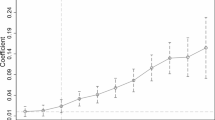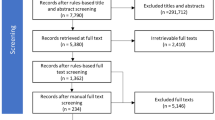Abstract
Urban areas are experiencing the expansion of distribution pipeline networks due to the transition from coal to natural gas for reducing carbon emissions. However, methane leaks from these pipelines are offsetting environmental benefits and raising safety concerns. Here, to address these issues, we propose integrating vehicle-based detection systems with sniffer canines to improve the efficiency of methane leak detection and localization in urban distribution networks. A practical methane emission measurement campaign covering approximately 4,000 km of natural gas distribution pipelines across 20 Chinese cities revealed that sniffer canines accurately pinpointed 432 natural gas release sources within the 220 leak areas identified by detection vehicles. Our findings indicate notable variations in spatial gas leak density and leak-prone components across different cities, with underground steel pipelines and aboveground risers being particularly prone to leaks. This study offers a promising solution for enhancing urban infrastructure management, thereby improving public safety and environmental protection.
This is a preview of subscription content, access via your institution
Access options
Subscribe to this journal
Receive 12 digital issues and online access to articles
118,99 € per year
only 9,92 € per issue
Buy this article
- Purchase on SpringerLink
- Instant access to full article PDF
Prices may be subject to local taxes which are calculated during checkout



Similar content being viewed by others
Data availability
The detection data involved in this work are shown in Supplementary Data 1 and 2. Source data are provided with this paper.
Change history
10 March 2025
A Correction to this paper has been published: https://doi.org/10.1038/s44284-025-00222-0
References
Wilson, I. G. & Staffell, I. Rapid fuel switching from coal to natural gas through effective carbon pricing. Nat. Energy 3, 365–372 (2018).
Kemfert, C., Präger, F., Braunger, I., Hoffart, F. M. & Brauers, H. The expansion of natural gas infrastructure puts energy transitions at risk. Nat. Energy 7, 582–587 (2022).
Vetter, C. P., Kuebel, L. A., Natarajan, D. & Mentzer, R. A. Review of failure trends in the US natural gas pipeline industry: an in-depth analysis of transmission and distribution system incidents. J. Loss Prev. Process Ind. 60, 317–333 (2019).
Weller, Z. D., Hamburg, S. P. & von Fischer, J. C. A national estimate of methane leakage from pipeline mains in natural gas local distribution systems. Environ. Sci. Technol. 54, 8958–8967 (2020).
Lamb, B. K. et al. Direct measurements show decreasing methane emissions from natural gas local distribution systems in the United States. Environ. Sci. Technol. 49, 5161–5169 (2015).
Kirschke, S. et al. Three decades of global methane sources and sinks. Nat. Geosci. 6, 813–823 (2013).
Fletcher, S. E. M. & Schaefer, H. Rising methane: a new climate challenge. Science 364, 932–933 (2019).
Gordon, D. et al. Evaluating net life-cycle greenhouse gas emissions intensities from gas and coal at varying methane leakage rates. Environ. Res. Lett. 18, 084008 (2023).
Alvarez, R. A., Pacala, S. W., Winebrake, J. J., Chameides, W. L. & Hamburg, S. P. Greater focus needed on methane leakage from natural gas infrastructure. Proc. Natl Acad. Sci. USA 109, 6435–6440 (2012).
Willey, R. J. Insights to the Columbia gas explosions Lawrence and North Andover, MA September 13, 2018. Process Saf. Prog. 40, e12195 (2021).
Jiang, H. et al. Numerical investigation and analysis of indoor gas explosion: a case study of “6·13” major gas explosion accident in Hubei Province, China. J. Loss Prev. Process Ind. 83, 105045 (2023).
Vogel, F. et al. Ground-based mobile measurements to track urban methane emissions from natural gas in 12 cities across eight countries. Environ. Sci. Technol. 58, 2271–2281 (2024).
Jackson, R. B. et al. Natural gas pipeline leaks across Washington, DC. Environ. Sci. Technol. 48, 2051–2058 (2014).
McKain, K. et al. Methane emissions from natural gas infrastructure and use in the urban region of Boston, Massachusetts. Proc. Natl Acad. Sci. USA 112, 1941–1946 (2015).
Lamb, B. K. et al. Direct and indirect measurements and modeling of methane emissions in Indianapolis, Indiana. Environ. Sci. Technol. 50, 8910–8917 (2016).
Defratyka, S. M. et al. Mapping urban methane sources in Paris, France. Environ. Sci. Technol. 55, 8583–8591 (2021).
Williams, J. P., Ars, S., Vogel, F., Regehr, A. & Kang, M. Differentiating and mitigating methane emissions from fugitive leaks from natural gas distribution, historic landfills, and manholes in Montréal, Canada. Environ. Sci. Technol. 56, 16686–16694 (2022).
Chamberlain, S. D., Ingraffea, A. R. & Sparks, J. P. Sourcing methane and carbon dioxide emissions from a small city: Influence of natural gas leakage and combustion. Environ. Pollut. 218, 102–110 (2016).
von Fischer, J. C. et al. Rapid, vehicle-based identification of ___location and magnitude of urban natural gas pipeline leaks. Environ. Sci. Technol. 51, 4091–4099 (2017).
Weller, Z. D., Im, S., Palacios, V., Stuchiner, E. & von Fischer, J. C. Environmental injustices of leaks from urban natural gas distribution systems: patterns among and within 13 US metro areas. Environ. Sci. Technol. 56, 8599–8609 (2022).
Sargent, M. R. et al. Majority of US urban natural gas emissions unaccounted for in inventories. Proc. Natl Acad. Sci. USA 118, e2105804118 (2021).
Weller, Z. D. et al. Vehicle-based methane surveys for finding natural gas leaks and estimating their size: validation and uncertainty. Environ. Sci. Technol. 52, 11922–11930 (2018).
Riddick, S. N. & Mauzerall, D. L. Likely substantial underestimation of reported methane emissions from United Kingdom upstream oil and gas activities. Energy Environ. Sci. 16, 295–304 (2023).
Ravikumar, A. P. et al. Repeated leak detection and repair surveys reduce methane emissions over scale of years. Environ. Res. Lett. 15, 034029 (2020).
Leak Detection Methods for Natural Gas Gathering, Transmission, and Distribution Pipelines (Highwood Emissions Management, 2022); https://highwoodemissions.com/wp-content/uploads/2022/04/Highwood_Pipeline_Leak_Detection_2022.pdf
Tian, S. et al. Investigating detection probability of mobile survey solutions for natural gas pipeline leaks under different atmospheric conditions. Environ. Pollut. 312, 120027 (2022).
Iwaszenko, S., Kalisz, P., Słota, M. & Rudzki, A. Detection of natural gas leakages using a laser-based methane sensor and UAV. Remote Sens. 13, 510 (2021).
Monteiro, V. et al. The impact of the COVID-19 lockdown on greenhouse gases: a multi-city analysis of in situ atmospheric observations. Environ. Res. Commun. 4, 041004 (2022).
Jones, T. S. et al. Assessing urban methane emissions using column-observing portable Fourier transform infrared (FTIR) spectrometers and a novel Bayesian inversion framework. Atmos. Chem. Phys. 21, 13131–13147 (2021).
Dowd, E. et al. First validation of high-resolution satellite-derived methane emissions from an active gas leak in the UK. Atmos. Meas. Tech. 17, 1599–1615 (2024).
Sherwin, E. D., Chen, Y., Ravikumar, A. P. & Brandt, A. R. Single-blind test of airplane-based hyperspectral methane detection via controlled releases. Elementa Sci. Anthrop. 9, 00063 (2021).
MobileGuardTM: Natural Gas Leak Detection System (ABB, 2023); https://library.e.abb.com/public/6d7c0a557bb2405a9fc4718bcb228da4/PB_MobileGuard%20Brochure_REV.E_EN_A4.pdf
Yan, G. et al. Mobile vehicle measurement of urban atmospheric CH4/C2H6 using a midinfrared dual-gas sensor system based on interband cascade laser absorption spectroscopy. IEEE Trans. Instrum. Meas. 71, 1–11 (2022).
Commane, R., Hallward-Driemeier, A. & Murray, L. T. Intercomparison of commercial analyzers for atmospheric ethane and methane observations. Atmos. Meas. Tech. 16, 1431–1441 (2023).
Wehnert, P. & Six, E. Discover Advanced Mobile Leak Detection (AMLD)-Natural Gas Leak Surveys Utilizing Mid-IR Open Path TDLAS (No. EGU24-1698) (Copernicus Meetings, 2024).
Galassi, R., Contini, C., Pucci, M., Gambi, E. & Manca, G. Odorant monitoring in natural gas pipelines using ultraviolet–visible spectroscopy. Appl. Spectrosc. 75, 168–177 (2021).
Gao, B. et al. Study of methane migration in the shallow subsurface from a gas pipe leak. Elementa Sci. Anthrop. 9, 00008 (2021).
Nešić, S. Key issues related to modelling of internal corrosion of oil and gas pipelines—a review. Corros. Sci. 49, 4308–4338 (2007).
He, B., Han, P., Lu, C. & Bai, X. Effect of soil particle size on the corrosion behavior of natural gas pipeline. Eng. Fail. Anal. 58, 19–30 (2015).
Wang, C., Li, W. & Wang, Y. A probabilistic-based model for dynamic predicting pitting corrosion rate of pipeline under stray current interference. J. Pipeline Sci. Eng. 1, 339–348 (2021).
Gallagher, M. E. et al. Natural gas pipeline replacement programs reduce methane leaks and improve consumer safety. Environ. Sci. Technol. Lett. 2, 286–291 (2015).
Edwards, M. R. et al. Repair failures call for new policies to tackle leaky natural gas distribution systems. Environ. Sci. Technol. 55, 6561–6570 (2021).
Aljurbua, A. & Sarabandi, K. Detection and localization of pipeline leaks using 3-D bistatic subsurface imaging radars. IEEE Trans. Geosci. Remote Sens. 60, 1–11 (2022).
Zheng, K. et al. Vehicle-deployed off-axis integrated cavity output spectroscopic CH4/C2H6 sensor system for mobile inspection of natural gas leakage. ACS Sens. 7, 1685–1697 (2022).
Maazallahi, H. et al. Intercomparison of detection and quantification methods for methane emissions from the natural gas distribution network in Hamburg, Germany. Atmos. Meas. Tech. 16, 5051–5073 (2023).
Acknowledgements
We thank three anonymous reviewers for comments and suggestions that improved this manuscript. We also express our gratitude to Hong Kong and China Investment Limited for their support. Funding for this study was from National Natural Science Foundation of China (grant no. 52402421 to H.L.) and the Natural Science Foundation of Jiangsu Province (grant no. BK20220848 to H.L.).
Author information
Authors and Affiliations
Contributions
Conceptualization, methodology, investigation and writing—original draft: H.L., D.X., Y.X., Z.S. and Y.F.C. Leak detection practices and data curation: H.L., Y.X. and Z.S. Formal analysis: H.L. and D.X. Supervision and funding: H.L. and Y.F.C. Writing—review and editing: H.L., D.X. and Y.F.C.
Corresponding author
Ethics declarations
Competing interests
The authors declare no competing interests.
Peer review
Peer review information
Nature Cities thanks Hossein Maazallahi and the other, anonymous, reviewer(s) for their contribution to the peer review of this work.
Additional information
Publisher’s note Springer Nature remains neutral with regard to jurisdictional claims in published maps and institutional affiliations.
Supplementary information
Supplementary Information
Supplementary Notes 1–5, Figs. 1–5, Tables 1–9 and References.
Supplementary Data 1
Natural gas release point data.
Supplementary Data 2
Leakage level data.
Supplementary Data 3
Source data for Supplementary Fig. 3.
Source data
Source Data Fig. 1
Source data.
Source Data Fig. 2
Source data.
Rights and permissions
Springer Nature or its licensor (e.g. a society or other partner) holds exclusive rights to this article under a publishing agreement with the author(s) or other rightsholder(s); author self-archiving of the accepted manuscript version of this article is solely governed by the terms of such publishing agreement and applicable law.
About this article
Cite this article
Lu, H., Xi, D., Xiang, Y. et al. Vehicle–canine collaboration for urban pipeline methane leak detection. Nat Cities 2, 336–343 (2025). https://doi.org/10.1038/s44284-024-00183-w
Received:
Accepted:
Published:
Issue Date:
DOI: https://doi.org/10.1038/s44284-024-00183-w
This article is cited by
-
Machine learning methods for predicting residual strength in corroded oil and gas steel pipes
npj Materials Degradation (2025)



